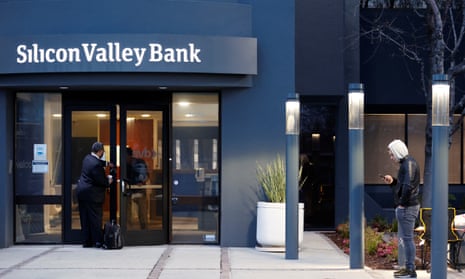Silicon Valley Bank (SVB) became one of the 20 largest banks in the US by being the darling of west coast tech startups, but it transpires that it expanded at the expense of managing its exposure to risk.
The bank provided services to more than 2,500 venture capital firms (VCs) – companies that invest in startups with the hope that they’ll achieve long-term growth – and nearly half of the US’s venture-capital-backed technology and life-science companies.
VCs and startups were allowed to keep multimillion-dollar balances with the bank when only $250,000 per account is insured by the federal government. The bank had done virtually nothing to hedge itself against increasing interest rates (even as the whole world anticipated them), and had successfully lobbied Congress for deregulation, reducing its regulatory oversight.
As interest rates increased, investing and running companies became more costly and clients began to withdraw cash. SVB began to look for ways to cover these withdrawals, sold some of its bond portfolio at a loss, and then failed to find a buyer.
Its collapse came in the same week as the Signature and Silvergate banks failed, raising concerns that it would lead to a wider run on the banks. There were also concerns that viable businesses would take a hit. Early-stage startups often make virtually no revenue, but use investors’ money, held in their bank accounts, to fund their operations. Beyond the shores of the US, SVB’s UK subsidiary had billions in deposits, again focused in the tech sector. Inevitably, calls came in for someone to step in and do something.
In the UK, HSBC bought up SVB UK. HSBC has a strong enough balance sheet to reassure everyone it can absorb SVB and as a result of the purchase has secured the deposits of more than 3,000 customers, worth £6.7bn. In the US, the Federal Reserve promised that depositors would have full access to their money. This exception to the normal rules was evidence that the US central bank feared the crisis would spread. The Fed made the point, alongside the US president, Joe Biden, that this would not be funded by taxpayers. Any shortfalls will be drawn from the Deposit Insurance Fund, which comes from fees paid by the banking industry. It remains to be seen if these fees are passed on to customers.
This is not a repeat of 2008, but we are seeing the same core principles play out. Government and central banks have stepped in to support financial institutions and the clients who rely on them. What is different this time is that unlike banks, which have long been aware of their relationship with the state, the tech sector believed it was above it. From libertarian key figures such as Peter Thiel to the “Silicon Six” shifting income to low-tax jurisdictions, big tech has rarely been a supporter of the state.
But as we see with SVB, the tech sector needs the support of the state when times get tough. Banks that specialise in tech investment are still connected with the wider banking system. The venture capitalists and tech companies that relied on their deposits being safe also rely on the same system as the rest of us. More broadly, the sector should stop seeing itself as exceptional and realise it is connected, and owes a duty, to society. Because next time, it may find that what’s left of the government and regulators are unwilling – or simply unable – to help.
James Ball is the global editor at The Bureau of Investigative Journalism

